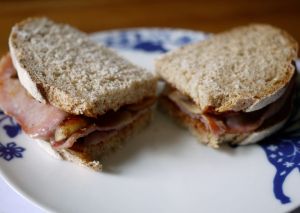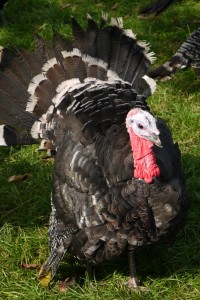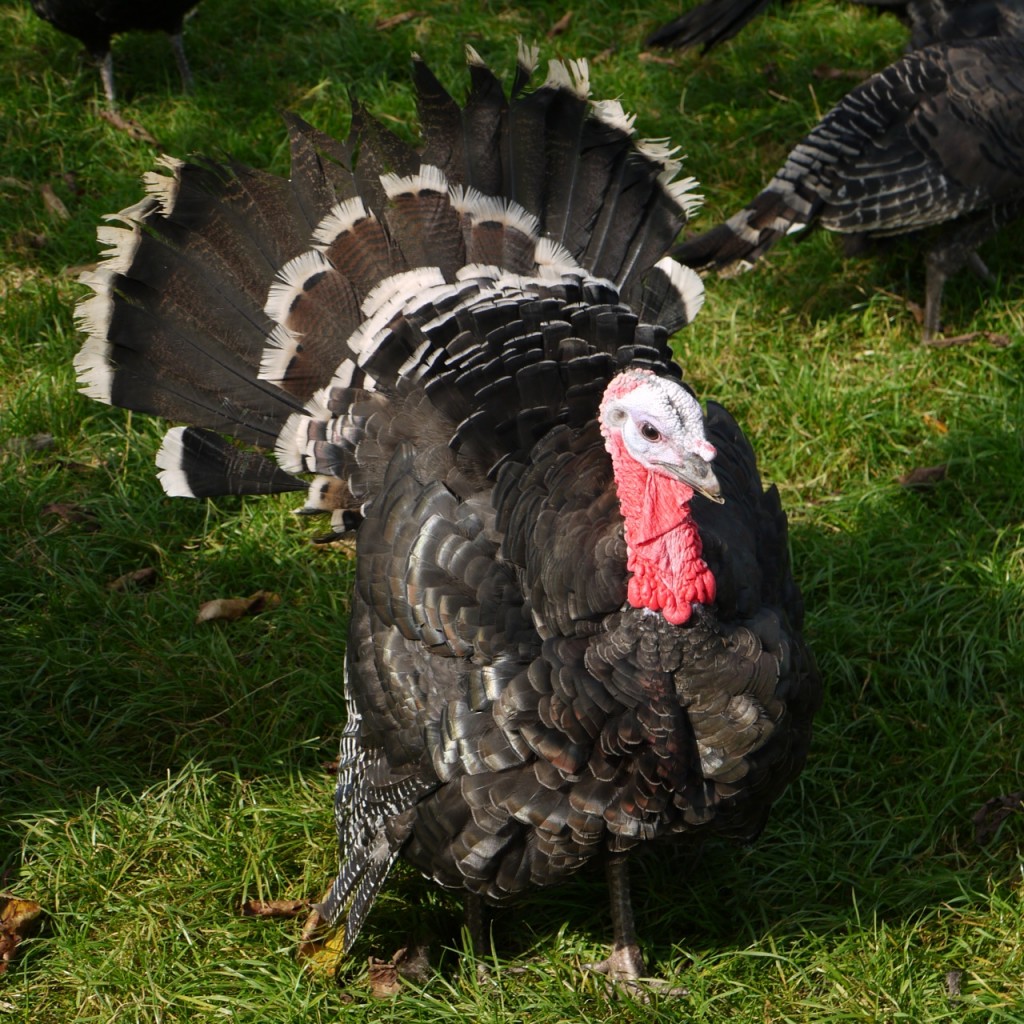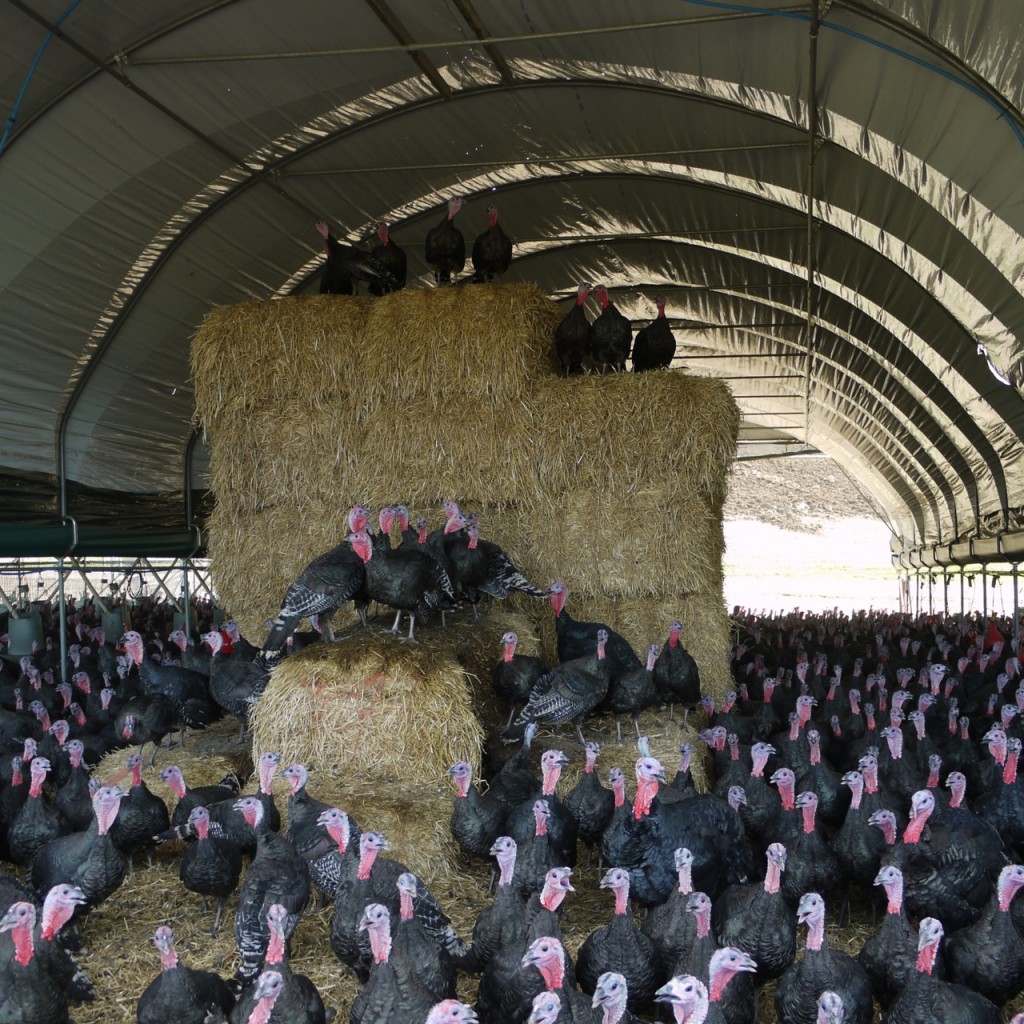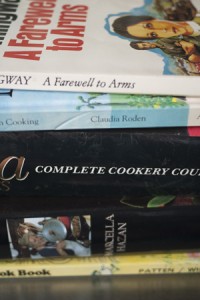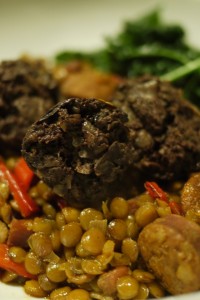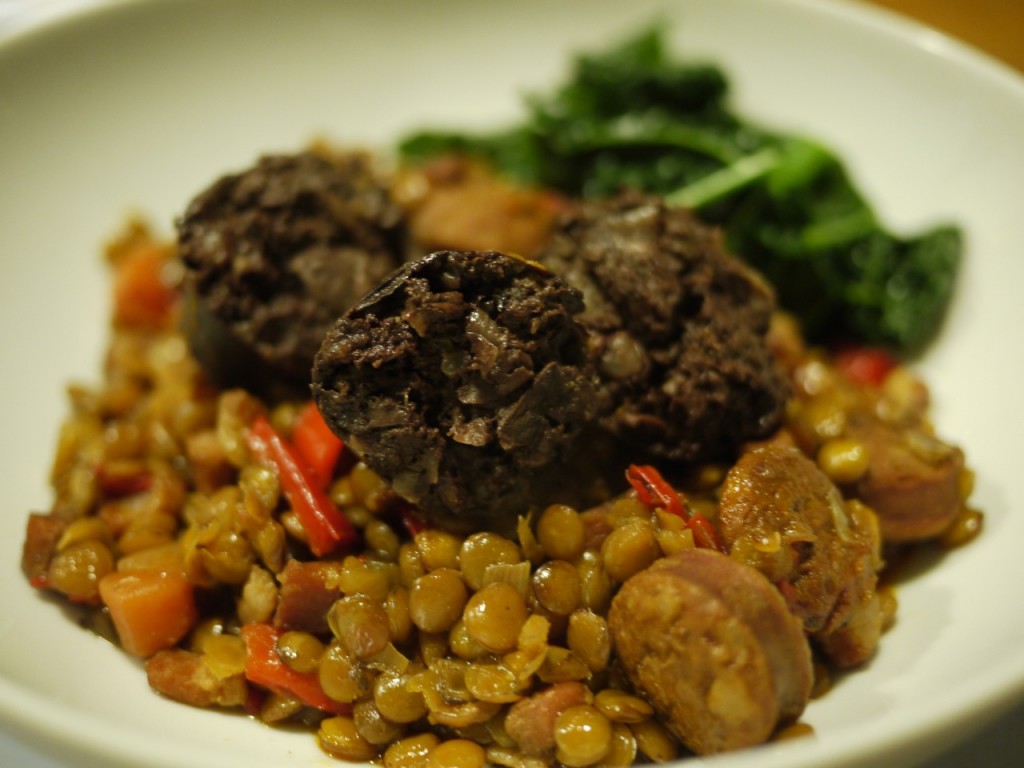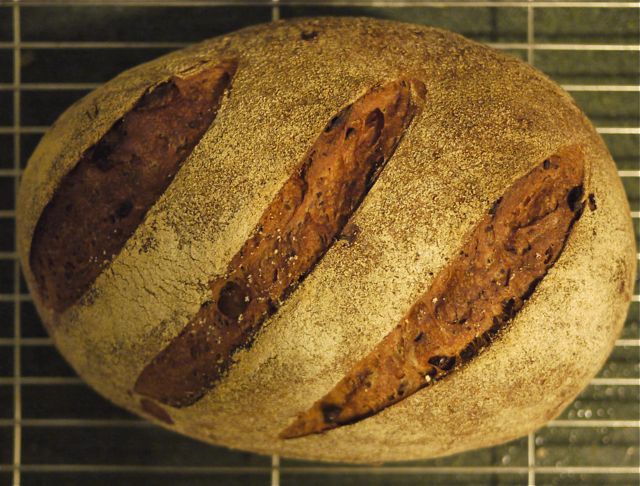Last night I was chatting to fellow food lovers Gower Cottage Brownies and Presents Queen (aks The Foodie Gift Hunter) about cookbooks and in particular first cook books and the first things we cooked.
Now as anyone who has read this post about food book I did knows I now have many many food related books….but of course a long long time ago I started with none….
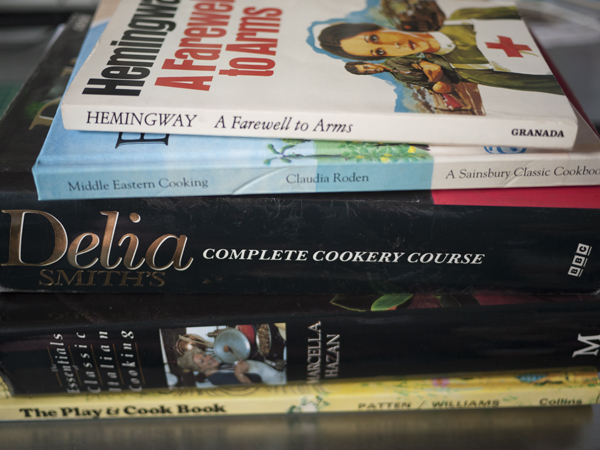
Here’s five books that have heavily influenced my cooking and count as first in some way or another
The Play and Cook Book, Marguerite Patten (1973)
This is genuinely the first cookbook I had that was my own. It was undoubtedly a gift but curiously I don’t recall who from. By the time I got it I suspect I already helped out cooking things like scones or fruit loaf with my mum and grandma. Neither had hardly any cookbooks and mostly cooked from memory or handwritten notes of recipes passed to them. We did have the Dairy Book of Home Management which I spent countless hours flipping though and looking at the pictures and projects. The book is in great condition mainly because I spent lots of time looking at it rather than cooking from it and also because I learnt very early to keep the cookbooks away from the action. Even my most used cookbooks have no splatters!
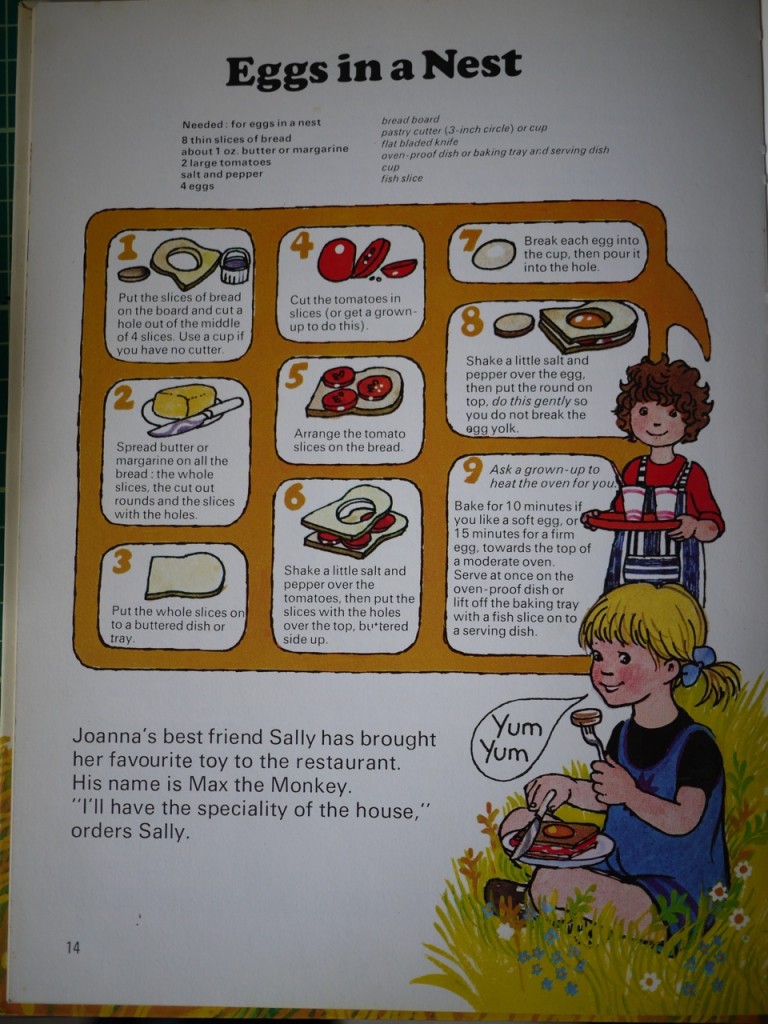
The three things I recall making from it are: Stuffed eggs, Eggs in a Nest and Rainbow Squares. The Rainbow Squares were a great disappointment it seemed impossible to get the coloured effect for each layer of the sweet even.
Delia Smith’s Complete Cookery Course (1982)
The copy in the picture is actually my husbands, my copy has gone AWOL and is a BCA special smaller format on really thin paper…it’s been well used and the pages are falling out. It’s the book I really learnt to cook from. In truth I learnt to cook from my Mum’s copies of the three separate paperbacks printed to go with the television series rather than these subsequently compiled versions. The first recipe I remember cooking on my own is Normandy Pork with Cream and Apples as a welcome home dish for my Mum after she had been on a school trip, I was 14. Other dishes I recall fondly are Paprika Liver, Scone base pizza and Lemon cheesecake. It’s still the book I turn to fist for basics and timings, though i promise I don’t make scone base pizza anymore. I don’t care what anyone says about Delia this book is a great place to learn.
A Farewell to Arms, Ernest Hemingway (1929, this edition 1984)
Okay now this isn’t a cookbook…but there is a description of food in it that made me want to cook something simple….the book is about the first world war and the part i recall is where some troops have become detached from the column and happen upon a farmhouse…they look for food…
‘There is not much to eat,’ Piani said. ‘They’ve cleaned it out.’
Bonello sliced a big white cheese on the heavy kitchen table.
‘Where was the cheese?’
‘In the cellar. Piani found wine too and apples.’
The soldiers drink some wine and eat slices of cheese and then they move on and back to the horror of the war and the wet and the mud.
In my mind there is a further passage where they simply cook pasta and slice cheese into it…I can’t find it now as I scan through, but the description stuck and the idea something as simple as pasta and cheese can be delicious stuck…and morphed into a regular recipe at home of creating pasta dishes from what ever we had (and calling the result pasta mix!). Of course any self respecting Italian is probably horrified by this gung ho approach…but there happens to be no Italian blood in my family and in Lancashire in the early 1980s I think we didn’t mind whether it was authentic or not just that it was easy, economical and tasted good. The idea lives on in dishes like this.
Middle Eastern Cooking, Claudia Roden (1986)
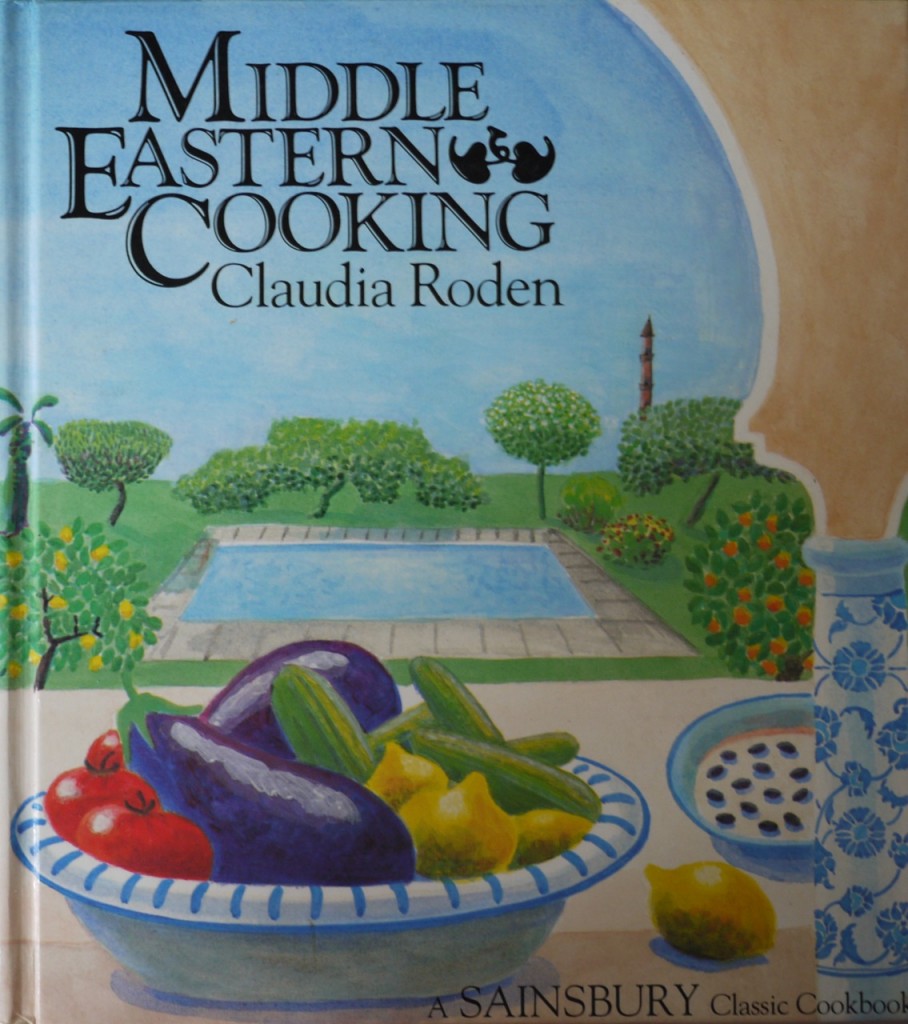
This is from a series that Sainsbury published in the mid 1980s and edited by Jill Norman. It’s got lovely vibrant illustrations by Julia Binfield. Supermarkets don’t seem to commission cookbooks as much these days but in the late 80s and early 90s there were great compact versions of books by well known authors to be had at bargain prices. I’ve quite a haul of them (not all are quite as nice as this in design terms). All of them though took me on a journey into cuisines I knew little about and got me to experiment with mexican, indian, middle eastern, chinese and more. My favourite recipe from this particular book is the Lentil and Spinach soup with Lemon…a wonderfully thick tasty soup thats easy to make.
The Essentials of Classic Italian Cooking, Marcella Hazan (1992)
My first Christmas present from my husband, way before he was my husband. This is where I learnt to make fresh pasta, really rich ragu and the best ever lasagne, light yet full of flavour. It’s a sort of Delia of Italian cooking for me and the place I go to check first for an Italian recipe.
All that without even knowing who Nigel Slater was….five books that have shaped how I eat and cook…what are your important five??
